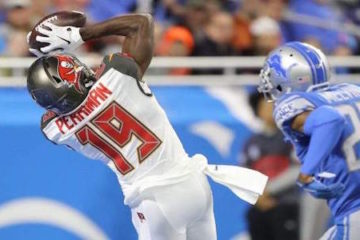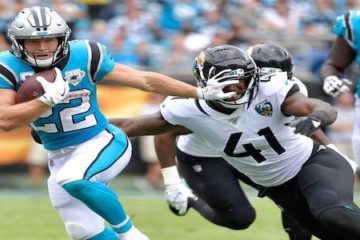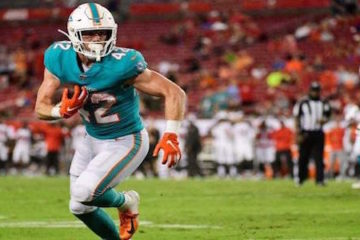2012 Fantasy Baseball, Brett Talley’s THE RUBBER Week 3: A closer look at K/9
But I often wonder what the comparative value of a called strike is.
As @Ben_Duronio pointed out in a recent Twitter conversation on this topic, a called strike has a lot of value to a pitcher because there is no chance of bad luck on a ball put in play. In other words, a pitcher can’t get BABIP’d if the batter never swings. So called strikes are likely preferred by pitchers.
But could called strikes be preferable in terms of predictive value for fantasy owners as well? My friend @TheBeanShooter pointed out that called strikes later in the count have more value because batters often take pitches early in the count but are usually looking to protect the plate with two strikes.
So I took a look at the number of called third strikes pitchers generated in 2010 with the hypothesis that this number was an indicator of good stuff and would lead to increased performance in 2011. But I could not have been more wrong. What I found instead were many pitchers with above average called third strike rates who took a step back in 2011.
The pitchers that were able to sustain their high called third strike percentage were pitchers with a high K/9 and good swinging strike rate. Conversely, the pitchers who couldn’t sustain their high called third strike percentage were pitchers with below average K/9 and a low swinging strike rate.
This isn’t exactly a revolutionary discovery, but it does tell us a couple of things. First, it furthers the idea that swinging strike rate is a very important statistic. Those who can miss bats are more likely to be able to fool batters into not swinging at all. Second, it can help us determine whether a jump in Ks from a particular pitcher is legitimate. If the jump in Ks is mainly fueled by an increase in called third strikes, the jump may not be sustainable.
So here are a few guys with below average K/9 numbers who had a high percentage of called third strikes in 2011. If you own one of these pitchers, it might be a good idea to consider trading them away.
Kyle Lohse (St. Louis Cardinals, 89.1% owned)
When I first thought of including Lohse in this list, I didn’t figure enough people owned him to recommend him as a sell option. But at almost 90% owned, Lohse has fooled more people than I thought. For one thing, Lohse fits the bill as a pitcher with a low K rate (career 5.58 K/9) that accumulated a fair amount of his strikeouts in 2011 on called strikes (33%, 16th highest rate among pitchers with 130+ IP). And it should come as no surprise that Lohse’s success through three starts this year has been fueled by luck. His BABIP is way low, his strand rate is way high and he has yet to allow a homerun (career 9.6% HR/FB rate).
That luck is going to run out sooner rather than later and Lohse will once again be the mid-4.00 ERA pitcher with below-average K numbers that he has always been. Sell high now while Lohse’s roto stats make him look more appealing than he really is.
Enter today’s Fantasy Fix’s FREEROLL hosted by DailyJoust. We’ve got $250 in cash prizes and best of all, it’s FREE to enter. Click here to sign up.
Mark Buehrle (Miami Marlins, 36.6% owned)
You generally know what you’re getting with Buehrle, but last year was one of Buehrle’s better years. Marginal luck in strand rate and called third strike percentage may have been the reasons for his better-than-average season. Buehrle had the ninth highest called third strike rate last year and isn’t a guy who racks up many Ks (career 5.07 K/9), so I’m skeptical about his chances of having another ERA closer to 3.50 as opposed to 4.00.
Bartolo Colon (Oakland Athletics, 13.7% owned)
As his ownership percentage indicates, people haven’t bought in on Colon again this year. However, Colon has had a nice couple of starts in a row, and if he strings together a couple more, then that ownership percentage is going to rocket up. With starts home to Chicago and at Baltimore coming up, it’s definitely possible he keeps this (fat) roll going. It might not be a bad idea to add him now so that you can sell high on him in a week or two.
The reason I don’t think Colon’s streak will last much longer than the next couple of starts is his insanely high called third strike rate last year. A crazy 56% of Colon’s Ks last year came on called third strikes and helped him to his first K/9 above 7.00 since 2000. That 56% rate was the highest in the league and only two other pitchers were even over 40%. So add Colon now, hope he keeps it going for a couple more starts, and then sell, sell, sell.
Vance Worley (Philadelphia Phillies, 43.8% owned)
As mentioned before, only three pitchers got more than 40% of their strikeouts on called third strikes last year. One was Colon, another was Cliff Lee (41%), and the third was Worley (55%). Worley wasn’t a big strikeout guy at any level of the minors and has a pedestrian 5.4% swinging strike rate in over 150+ major league innings. So Worley’s surprising 8.13 K/9 in 2011 was very luck-driven and not likely sustainable. His ERA is 2.37 through 3 starts and he has 21 strikeouts, so he’s a pretty good sell high candidate.
Written by Brett Talley exclusively for thefantasyfix.com. Brett is a law student in Dallas who has had many non-revolutionary discoveries. You can follow him and/or ask him for fantasy advice on Twitter @therealTAL.
(April 9, 2012 – Photo by Andy Lyons/Getty Images North America)






